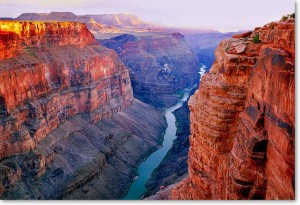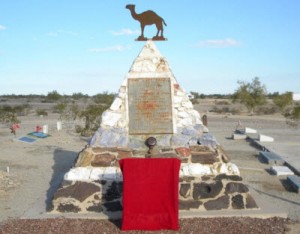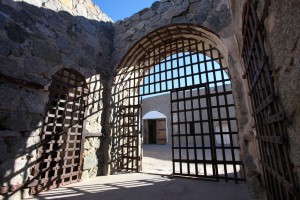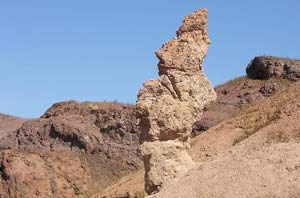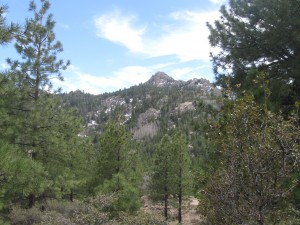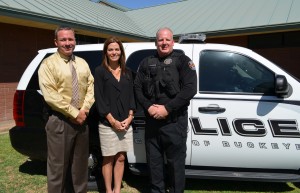
Buckeye Police Officer Jeffery Lumadue has been named School Resource Officer of the Year by the Arizona School Resource Officers Association!
In March, AZ Cities @ Work featured Lumadue for going above and beyond the call of duty with Officer Michael Miklus. The two helped a boy whose bike was stolen. Cities @ Work is overjoyed that Lumadue is being further recognized for his outstanding initiative.*
Lumadue is a 14-year law enforcement veteran who has been the SRO at Buckeye Elementary School for four years and Buckeye Union High School for another two.
Lumadue was cited by the state group for his strong stance with school children on truancy, drug use and bullying. It’s Lumadue’s pilot program, though, that has attracted the most attention. The program holds some parents criminally responsible for their children not attending school.
The program Lumadue initiated now operates at schools throughout the Buckeye Elementary School District. It has shown a significant drop in truancy rates. Only a handful of parents have been ticketed by police for the continued absence of their children from the classroom.
“This process works because the school secretaries, counselors, assistant principals and principals are an integral part of the process before a citation is ever issued,” Lumadue said. “We make every effort to work with the parent and child to find out what possible issues may be causing the child to miss school. The vast majority of parents have been very receptive to the program.”
Lumadue is humbled by the attention his SRO state award has brought because he feels it’s the consistency in the anti-truancy program – from the classroom to the courts – that has brought the positive results.
“Communication is the key,” Lumadue said. “We don’t want to prosecute parents. We want kids to have the chance to regularly go to school and to succeed, and this program has had some phenomenal results.”
But Lumadue’s efforts aren’t just limited to truancy. Two years ago he spearheaded a move to redefine the Drug Free School Zone around Buckeye schools, a 1,000-foot sign-posted boundary now recognized at all the schools.
An anti-bullying campaign has also been in Lumadue’s focus. The classes he teaches in the schools illustrate the importance of youngsters setting goals, to build character and develop leadership skills.
“We take a very pro-active stance on bullying, if we see or hear it, we indicate that it needs to stop,” Lumadue said. “We tell students that they have a right to feel comfortable when they’re in school, and if they worry about bullying before school and it prompts fear of any kind, they need to talk to someone so it can be stopped.”
Like most professionals in public safety roles, Lumadue isn’t in it for the praise, accolades or headlines. Since he first entered Buckeye Elementary School that first day of school, he’s relished the switch to this different kind of police work.
“All this is part of my job, and that’s why I enjoy going to work every day,” Lumadue said. “I like working with kids and making a difference in their lives. These are critical times in their lives, and these kids really look up to you as a role model and see police officers in a different role.”
*Watch the video that highlights Lumadue’s and Miklus’ outstanding work in March here: http://www.youtube.com/watch?v=5zkPQioaDhc
